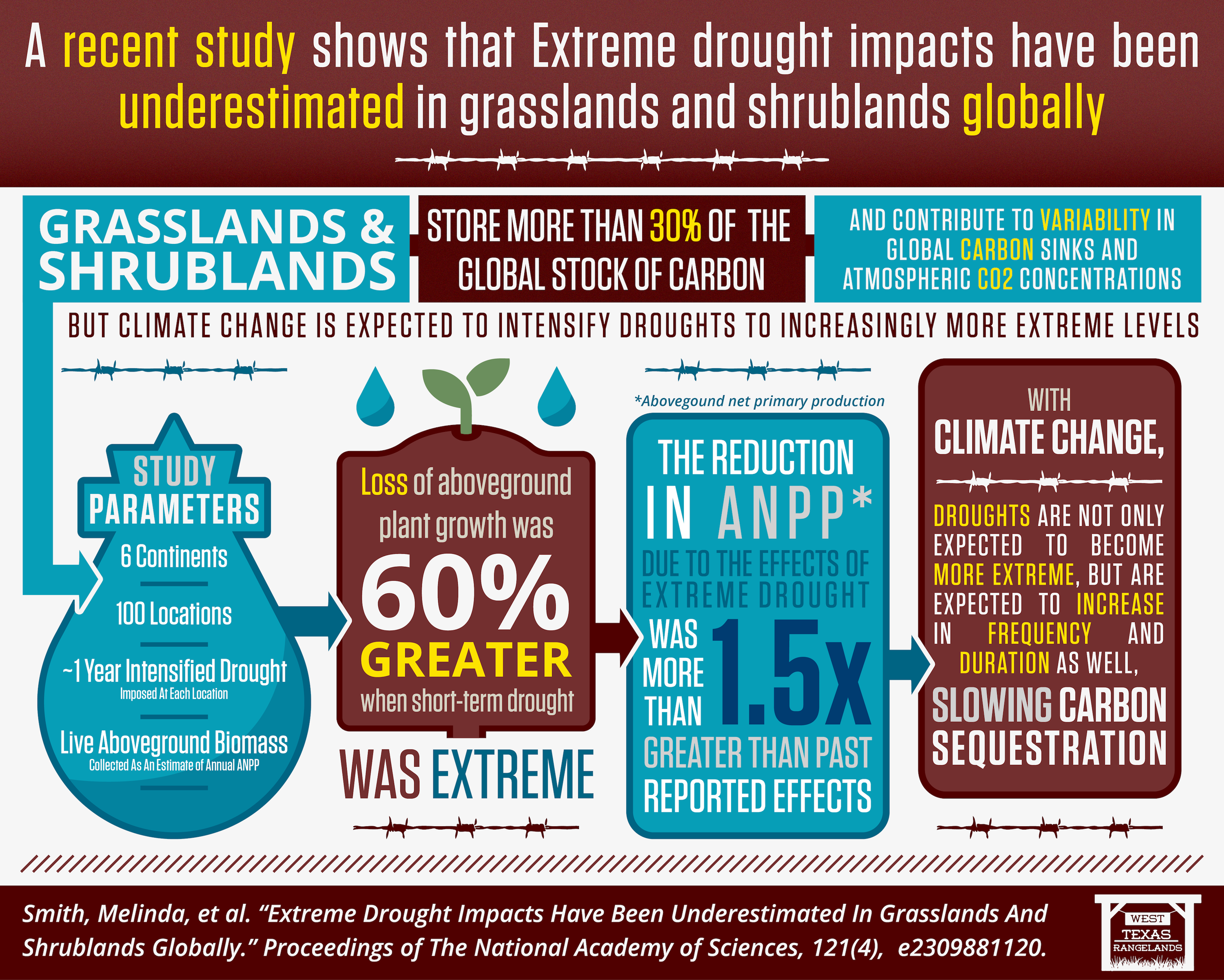 As the climate is changing so is the frequency and severity of short-term drought events. A new study by Dr. Bill Rogers and others (the study has over 169 authors from around the world!) showed that while drought has intensified, the effects on the functioning ecosystem remain largely unresolved and unrecovered. This is due to the differences in variations of drought and differences in ecosystems that potentially mediate drought impacts. This fascinating new research from Dr. Rogers and team used a coordinated distributed experiment to quantify the impact of short-term drought on grassland and shrubland ecosystems from across the world.
As the climate is changing so is the frequency and severity of short-term drought events. A new study by Dr. Bill Rogers and others (the study has over 169 authors from around the world!) showed that while drought has intensified, the effects on the functioning ecosystem remain largely unresolved and unrecovered. This is due to the differences in variations of drought and differences in ecosystems that potentially mediate drought impacts. This fascinating new research from Dr. Rogers and team used a coordinated distributed experiment to quantify the impact of short-term drought on grassland and shrubland ecosystems from across the world.
A single year of drought was imposed on 100 different sites on 6 different continents. Their study showed that a loss of foundational ecosystem function – aboveground net primary production (ANPP) – was 60% greater at sites that experienced statistically extreme drought (1-in-100-year event) vs. those sites where drought was nominal in magnitude (35% vs. 21%, respectively).
This reduction in a key carbon cycle process with a single year of extreme drought greatly exceeds previously reported losses for grasslands and shrublands. This study also revealed higher variability in drought response and that relative reductions in ANPP were greater in drier ecosystems and those with fewer plant community species.
Overall, less diverse sites are likely to be the most vulnerable to extreme drought. In addition, the study shows that global impacts of projected increases in drought severity have been significantly underestimated.
For the full study and more information, be sure to check it out here.
Smith, M. D., Wilkins, K. D., Holdrege, M. C., Wilfahrt, P., Collins, S. L., Knapp, A. K., Sala, O. E., Dukes, J. S., Phillips, R. P., Yahdjian, L., Gherardi, L. A., Ohlert, T., Beier, C., Fraser, L. H., Jentsch, A., Loik, M. E., Maestre, F. T., Power, S. A., Yu, Q., . . . Zuo, X. (2024). Extreme drought impacts have been underestimated in grasslands and shrublands globally. Proceedings of the National Academy of Sciences of the United States of America, 121(4). https://doi.org/10.1073/pnas.2309881120